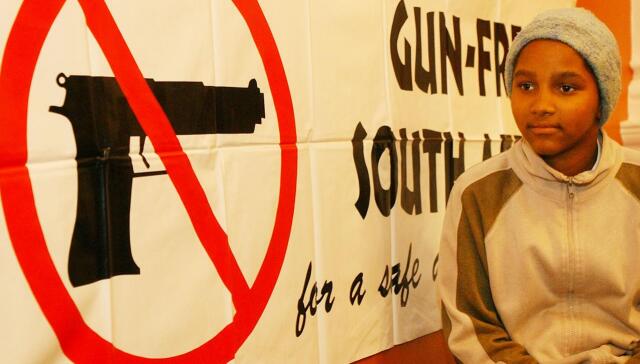“We also found that the Western Cape, Northern Cape, Free State and KwaZulu-Natal have much higher rates of overall femicide and intimate partner femicide compared to national and the other five provinces.”
GUN Free SA (GFSA) has said the latest South African femicide study highlighted that gun control was integral to saving girls’ and women’s lives.
The organisation was responding to the third national femicide study released by the SA Medical Research Council (SAMRC), which examined women murdered in 2017 and compares the findings with those of the 1999 and 2009 studies.
The SAMRC looked to address the key question: Is there any evidence that the national efforts to combat GBV in South Africa are having any impact on the problem of femicide?
It said it found that a total of 2,407 women 14 years and older were estimated to have been murdered in South Africa in 2017. This is very similar to the estimated number of women murdered in 2009.
The number of intimate partner femicides a day remains unchanged at three women murdered a day by an intimate partner in 2017.
“We consider femicide rates as the best statistic for comparison across the study years because population growth is taken into account in calculating rates,” SAMRC said.
“Intimate partner femicide has been decreasing since 1999. There is no change in the non-intimate partner murder rate between 2009 and 2017.”
SAMRC said provincially in the 2017 femicide rates, the Eastern Cape reported higher rates (compared to the national rates) across both types of femicide.
“We also found that the Western Cape, Northern Cape, Free State and KwaZulu-Natal have much higher rates of overall femicide and intimate partner femicide compared to national and the other five provinces.”
The study also explored rape- and firearm-related femicides.
The SAMRC found that there was an overall decline in the proportion of suspected rape murders between the three studies. In 2009 there was a substantial increase from 1999 in suspected rape murders among the non-intimate partner femicide (NIPF) but in the most recent study, the levels of suspected rape murders decreased to the same level of 1999: 13.2% in 1999 and 13.6% in 2017.
“Firearm-related femicide remained unchanged among the IPFs while an increase was found among the NIPFs. The increase in firearm usage among the non-intimate partner femicides is possibly due to deterioration in the control of unlicensed firearms. Strengthening firearm control therefore remains critical. We saw a decline in the number of perpetrators who committed suicide after murdering their partners – this declined from 18.2% in 2009 to 12.9% in 2017 (not shown). Such murder-suicides are typically committed with a firearm,” SAMRC said.
GFSA director Adèle Kirsten said: “The latest SAMRC study is good news. It shows we have halved femicide in South Africa over the past 18 years. It also tells us that to further protect women and girls, we need a strong gun law that is well enforced with zero tolerance for corruption and fraud. This is one of the reasons GFSA supports proposed amendments to strengthen gun law: it will help save lives.”
Kirsten said it coincided with the promulgation and implementation of the Firearms Control Act.
“While more research is needed to understand why there is this difference, the ready availability of guns in South Africa as a result of breakdowns in firearms control management means more women and girls are shot dead. Under-resourcing, poor planning as well as criminality involving fraud, corruption and theft dating to 2010/11 have made guns more available,” Kirsten said about gun femicide increasing from 2009.
“With increased gun availability, more people, including women and girls, are being shot and killed.
“Mop-ups will only be effective if we close the taps leaking illegal guns into our communities. The biggest tap is legal guns held by the state and civilians, which means we have to urgently strengthen controls over legal guns and ammunition to stop them leaking into the illegal pool,” Kirsten said.
Daily News








